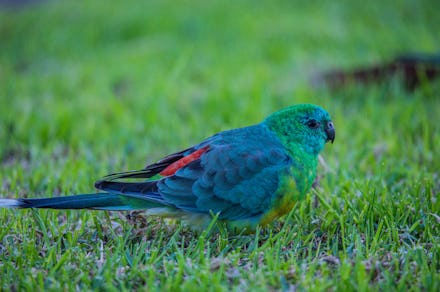Animals are "shape-shifting," and scientists think climate change is to blame

Remember Darwin's finches? In the 1800s, Charles Darwin traveled to Galápagos Islands, where he documented that birds occupying the island evolved to develop different beak shapes that were better suited for the types of food available to them in their given region.
Well, meet Climate Change's parrots. According to new research published this week in the journal Trends in Ecology and Evolution, researchers have discovered that more than 30 species of animals, from bats and birds to mice and rabbits, have started "shape-shifting" — growing larger appendages and improving their ability to regulate their body temperature as the planet they occupy continues to warm.
Using existing research, field work, laboratory experiments, and a rich catalog of preserved animal specimens that date back decades, researchers were able to track physical changes that have occurred in several dozen species. They found a surprising trend: Animals are growing bigger body parts. Beaks, legs, ears, and tails are starting to get longer, despite the fact that body size has largely remained the same or even shrink. The reason, the researchers theorize, is that the animals may be trying to keep themselves cool. More surface area allows the animals to dissipate heat more effectively — an idea that finds its basis in Allen's Rule, an ecogeographical principle that dates back to the late 1800s.
The biggest change identified by the researchers was found in the Australian parrot species, which saw their beaks increase by as much as 10% since 1871. This perhaps shouldn't come as a total surprise, as researchers have been documenting a similar trend in a number of bird species. In 2019, an extensive study of migratory birds in North America found that many species had experienced shrinking bodies and increasing wing spans over a four-decade period.
The parrots weren't alone, either. With 65 years of historical data available, researchers were able to document a more than 1% increase in the wing size of Chinese roundleaf bats. Researchers also found that European rabbits had grown longer ears over time, and a variety of mice species had longer tails than they had in the past.
All of this means that animals are changing as the planet does. What isn't clear is if these shifts will stick around in the long term, or whether they will help these animals survive the planet's rising temperature. "It means animals are evolving, but it does not necessarily mean that they are coping with climate change. We can see that some species have increased in appendage size so far, but we don't know if they will be able to keep up as the climate crisis worsens," Sara Ryding, a researcher at Deakin University in Australia, told CNN.
Species of plants and animals that have the ability to adapt quickly have a better shot of withstanding the effects of climate change. But in the grand scheme of things, we shouldn't view these changes as a positive. Rather, they are a warning sign. Animals are changing their bodies in order to survive. Imagine what we'll have to do if we don't act fast.